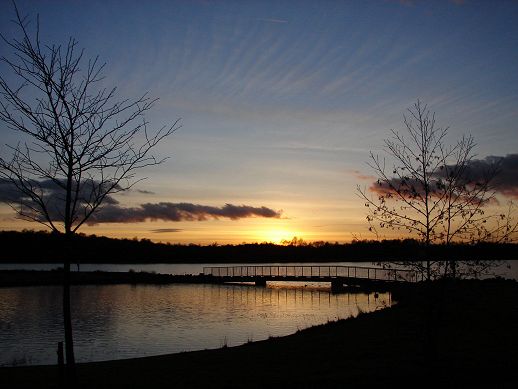
Perhaps the first colour supplement of the New Year should start with a picture of dawn on a frosty morning - but here's one of a sunset on a frosty evening instead! While there have been a number of dull, overcast days, there has also been some bright, sunny weather - as in this picture taken at Drumpellier Country Park in North Lanarkshire.
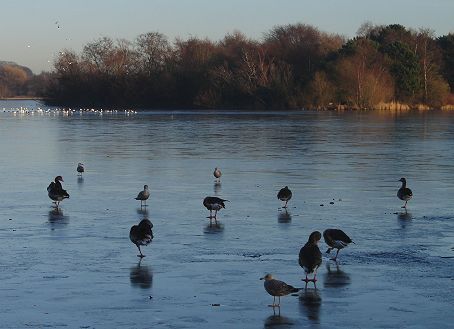
The cold weather and clear skies have resulted in the water in smaller lochs and ponds freezing over. This wintry scene in the late afternoon at Hogganfield Loch on the outskirts of Glasgow, shows some of the local bird population coping with that. Who can blame some of the geese for standing on one leg on the ice, to cut down on the heat loss?
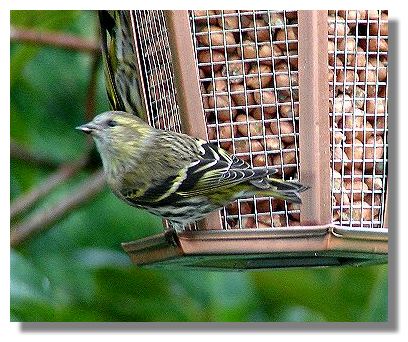
Cold weather often brings birds in from the countryside to share in the food put out in many suburban gardens. I don't often see Siskins in my own garden.
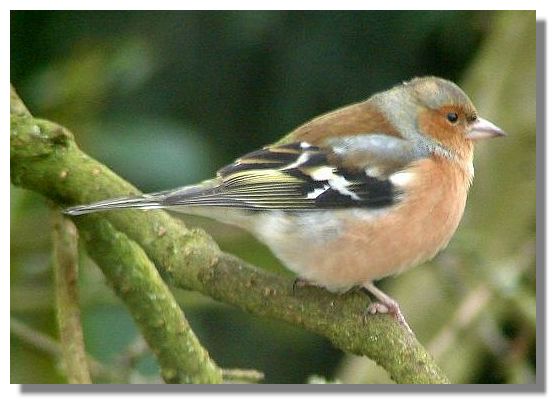
This may be a young chaffinch with its feathers fluffed up against the cold weather, but looking at its rotund form, I wondered whether it had been enjoying too much Christmas lunch of seeds and nuts?
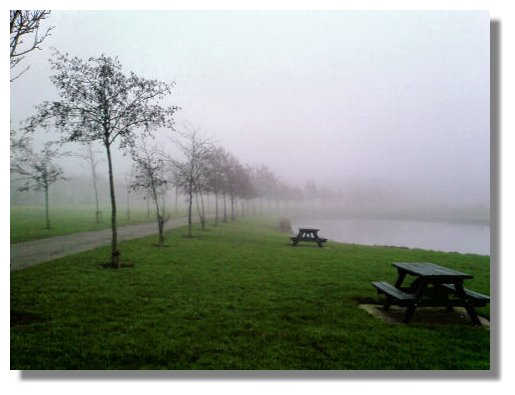
It may look very romantic seeing the mist swirling amongst the bare trees, but coping with the cold, clammy atmosphere is not quite so pleasant! The picture was taken at Drumpellier Country Park in North Lanarkshire.
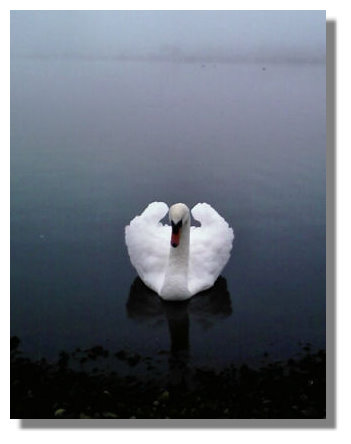
This swan came gliding silently out of the mist straight towards me - looking for any food I might be willing to throw towards it. Since it had posed so gracefully for me, it got its reward! But when the bread was not coming fast enough, it began to rise out of the water to see if it could just help itself from the bag... That was when I beat a hasty retreat...
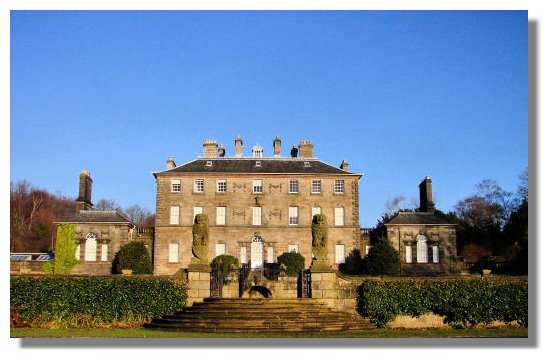
Fortunately, it isn't all rain and mist. This photo of Pollok House in Glasgow was taken as I was on my way to have lunch in this National Trust property. Their restaurant has been created in the basement out of the original kitchen for the building, still with many of the Victorian ovens and cooking pots around the walls. The food is good too!
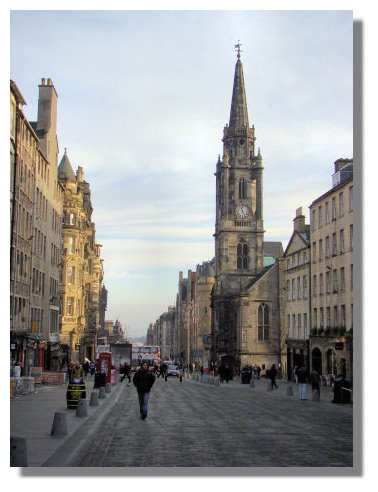
Some sections of Edinburgh's Royal Mile (the series of roads that run from the castle down to the Palace of Holyroodhouse) have cars banned from them during the daytime, which certainly improves the photogenic quality of the thoroughfare. The building on the right is the Tron Kirk - a church which is now used to provide information on the history of the Royal Mile.
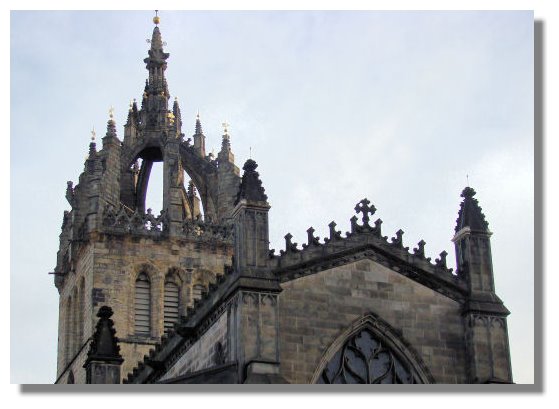
The golden ornamentation on the distinctive spire of St Giles Cathedral is glinting in the weak winter sun in this photograph. St Giles has been undergoing a lot of renovation and there is often scaffolding around it - which must be a disappointment for tourists who want to take a photograph.
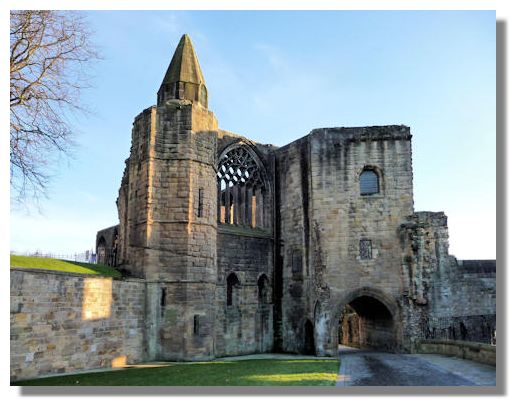
In addition to Dunfermline Abbey, over the years extensive monastic buildings were built to the south of the abbey church, with cloisters, dormitories, refectories and a calefactory, or warming house. This was the only part of the building which had any heating, which must have made life very hard for the Benedictine monks who lived there. Over the centuries, as a result of royal patronage, the abbey flourished and expanded. An important role of the building was to provide accommodation for important visitors, including the reigning monarchs. A large guest house was built and King James VI's wife, Anne of Denmark, was granted the guest house in 1589. It was remodelled to provide a palace for her use and the building is now known as Dunfermline Palace. The future King Charles I was born there in 1600. The gatehouse (pictured above) is the best preserved part of the extensive palace buildings.
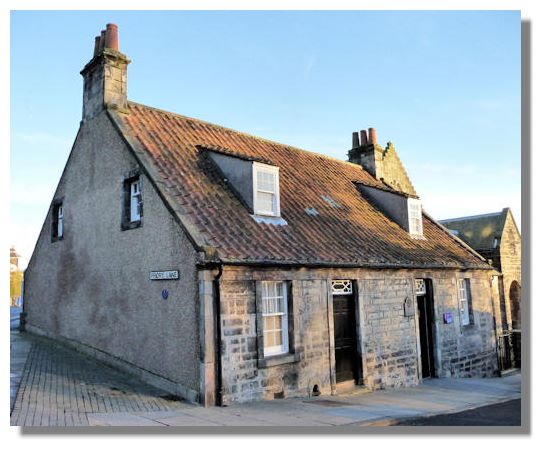
The American industrialist and entrepreneur Andrew Carnegie was born in this modest cottage (now a museum) in Dunfermline in 1835. Carnegie emigrated to USA in 1848 and got a job in a textile firm as a bobbin boy but eventually became a clerk in the Pennsylvania Railroad Company. With hard work, talent, luck - and a streak of ruthlessness - he worked his way up the company to become head of the firm. He exploited the concept of the railway sleeping car but made his first million dollars (by the time he was 30) by shrewd purchases of stock at low prices and selling at a vast profit.
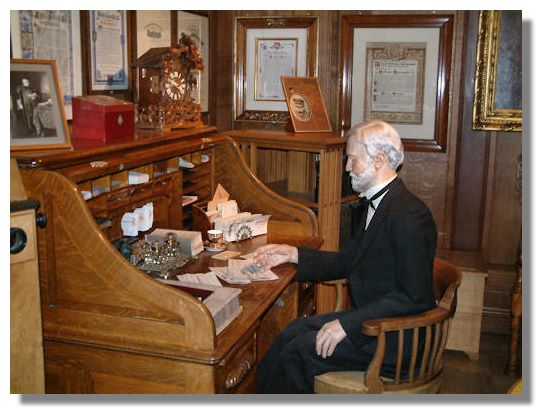
Carnegie moved into the iron industry and during the Civil War (1861-1865) he expanded the railways, using iron for bridges instead of wood. Investments in oil followed, then his first steelworks in 1867 (one of the first in America). In the 1880s he was the leading iron and steel producer in the country. But by 1900, having decided that "The man who dies rich dies in disgrace" he sold out to the United States Steel Corporation and set about distributing his vast fortune. He set up 2,500 libraries in Britain and North America and all four of the older Scottish universities received bequests, as did Carnegie Mellon University. His home town of Dunfermline was not forgotten either ("the most sacred spot to me on earth"). By the time he died in Massachusetts in 1919, he had made bequests amounting to over $350 million during his lifetime. The picture above is a replica of one of Carnegie's offices which has been created in the museum extension adjoining his birthplace.
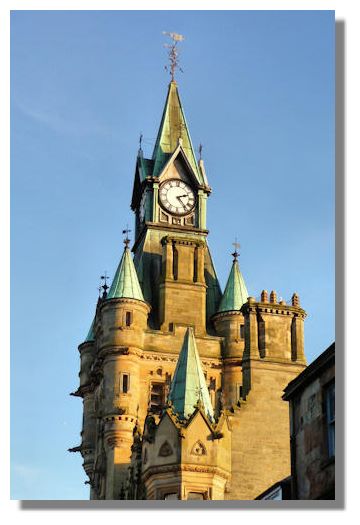
The City Chambers in Dunfermline has been described in an architectural guide to Fife as "an elaborate French Gothic concoction with Scottish overtones, its Fettes-type clock steeple surging up from its narrow corner site to celebrate the mercantile prosperity of 19th-century weaving." The Fettes referred to in this description is a famous private school for boys in Edinburgh.
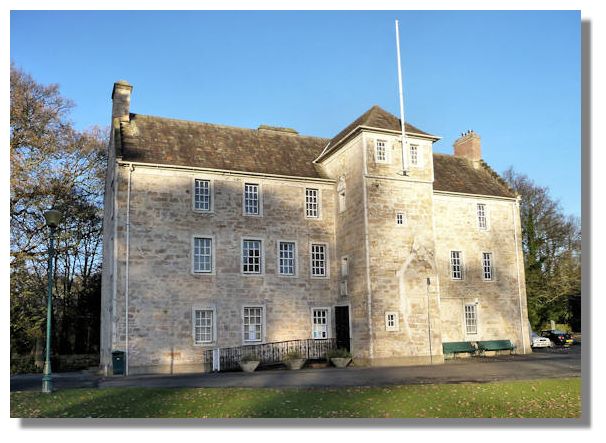
Among other endowments in Dunfermline by Andrew Carnegie, Pittencrieff House (dating from around 1635) and gardens were bought for the town. It is said that, as a child, Carnegie had been ejected from the gardens by the then owner. Pittencrieff House is now a museum of local life. In the extensive gardens stands a fine statue to Carnegie and the impressive main entrance gates are dedicated to his wife, Louise.
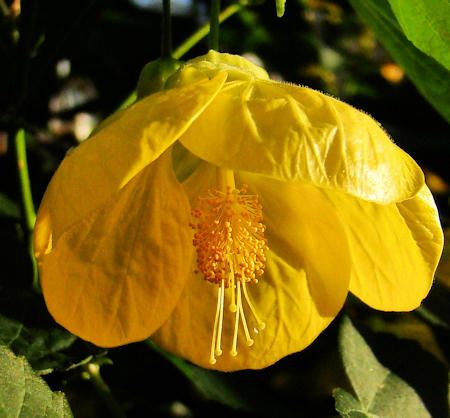
The hot-house adjoining Pittencrieff House has a large collection of plants. As a result of its heating, delicate flowers such as this golden yellow abutilon are in flower even in January.
If you want to look back at other editions of these photos of Scotland week by week, there is an Index Page

Where else would you like to go in Scotland?


